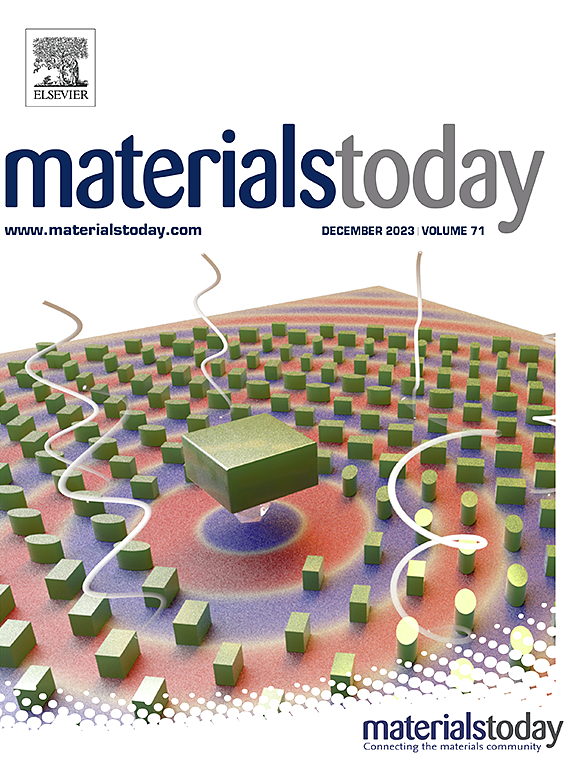Unveiling the contact electrification of triboelectric fibers by exploring their unique micro- and macroscale structural properties
IF 21.1
1区 材料科学
Q1 MATERIALS SCIENCE, MULTIDISCIPLINARY
引用次数: 0
Abstract
The emerging triboelectric fibers or textiles have recently attracted widespread attention due to their unique wearable energy supply and self-powered sensing functions. However, the unique micro- and macrostructural effects of triboelectric fibers on contact-electrificaion (CE) have not been systematically studied, which result in the lower charge output compared to conventional film structure. Here, in order to provide theoretical guidance for designing high-performance triboelectric fibers with optimized structural designs, a systematic experimental measurement and theoretical analysis method is developed to explore the influence laws and potential mechanisms of the surface microstructural defects and overall macrostructural compositions of triboelectric fibers on their CE behaviors. It can be found that the surface microstructure defects contribute to increasing the total charge transfer, due to the increase in effective interface contact area. In addition, triboelectric fibers with core–shell coaxial structure prepared by uniform coating method have higher electrical output performance, which can ensure maximum contact between the conductive layer and the dielectric layer. This work provides a new research paradigm for studying the CE behavior and quantifying surface charges of complex structures, and suggests a multiscale structural design strategy for high-performance triboelectric fibers.

通过探索摩擦电纤维独特的微观和宏观结构特性,揭示了摩擦电纤维的接触通电特性
近年来,新兴的摩擦电纤维或纺织品因其独特的可穿戴能源供应和自供电传感功能而受到广泛关注。然而,摩擦电纤维独特的微观和宏观结构对接触电(CE)的影响尚未得到系统的研究,这导致与传统薄膜结构相比,摩擦电纤维的电荷输出较低。本文采用系统的实验测量和理论分析方法,探索摩擦电纤维表面微观结构缺陷和整体宏观结构组成对摩擦电纤维CE行为的影响规律和潜在机制,为优化结构设计高性能摩擦电纤维提供理论指导。可以发现,由于有效界面接触面积的增加,表面微观结构缺陷有助于增加总电荷转移。此外,采用均匀涂层法制备的芯壳同轴结构的摩擦电纤维具有更高的电输出性能,可以保证导电层与介电层之间的最大接触。该研究为复杂结构的CE行为研究和表面电荷量化提供了新的研究范式,并提出了高性能摩擦电纤维的多尺度结构设计策略。
本文章由计算机程序翻译,如有差异,请以英文原文为准。
求助全文
约1分钟内获得全文
求助全文
来源期刊

Materials Today
工程技术-材料科学:综合
CiteScore
36.30
自引率
1.20%
发文量
237
审稿时长
23 days
期刊介绍:
Materials Today is the leading journal in the Materials Today family, focusing on the latest and most impactful work in the materials science community. With a reputation for excellence in news and reviews, the journal has now expanded its coverage to include original research and aims to be at the forefront of the field.
We welcome comprehensive articles, short communications, and review articles from established leaders in the rapidly evolving fields of materials science and related disciplines. We strive to provide authors with rigorous peer review, fast publication, and maximum exposure for their work. While we only accept the most significant manuscripts, our speedy evaluation process ensures that there are no unnecessary publication delays.
 求助内容:
求助内容: 应助结果提醒方式:
应助结果提醒方式:


